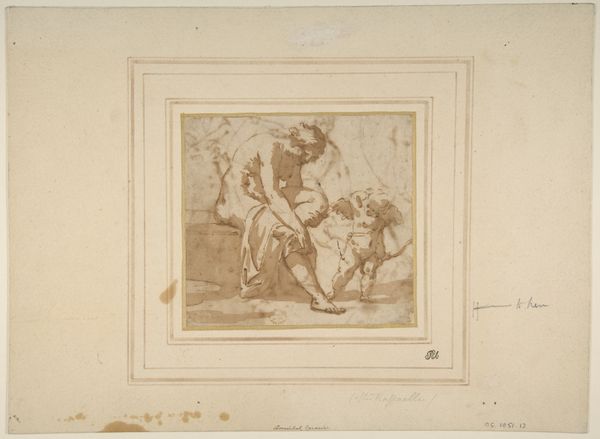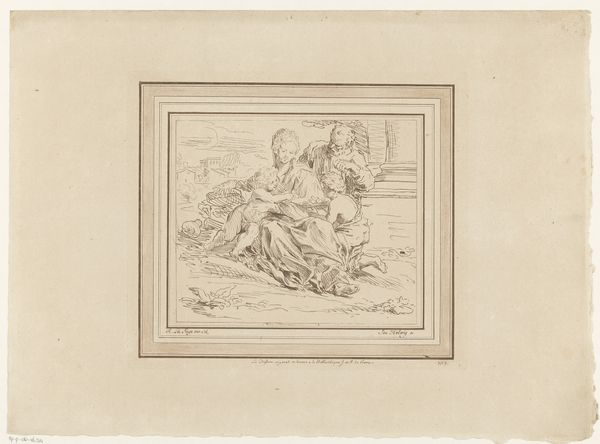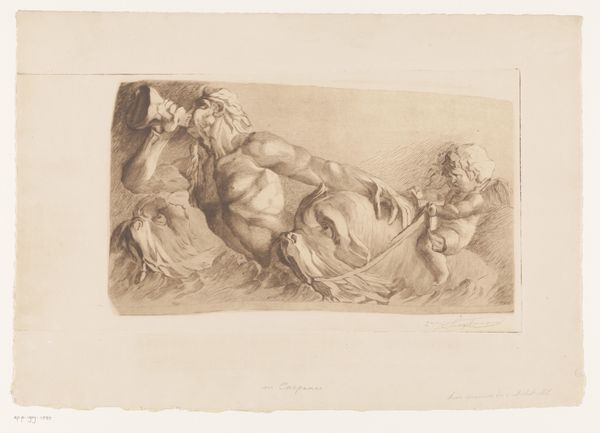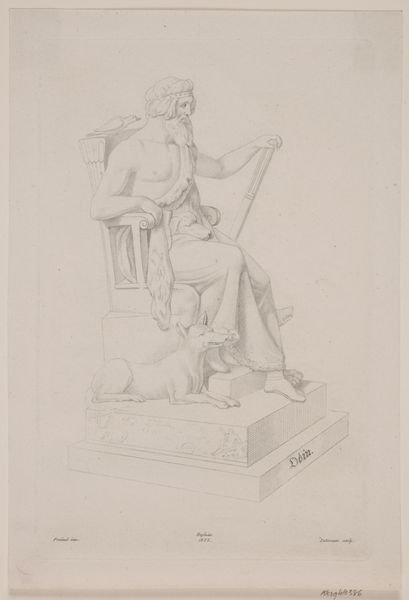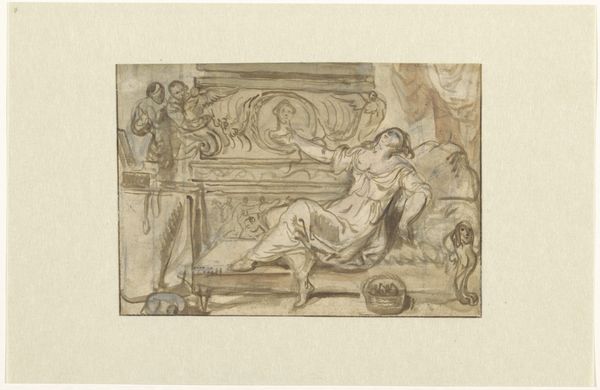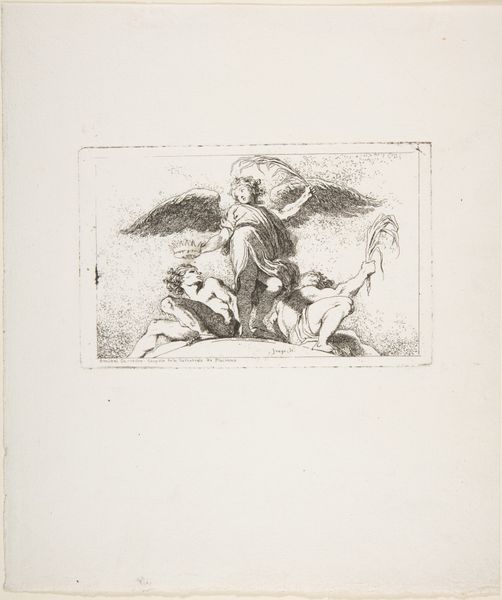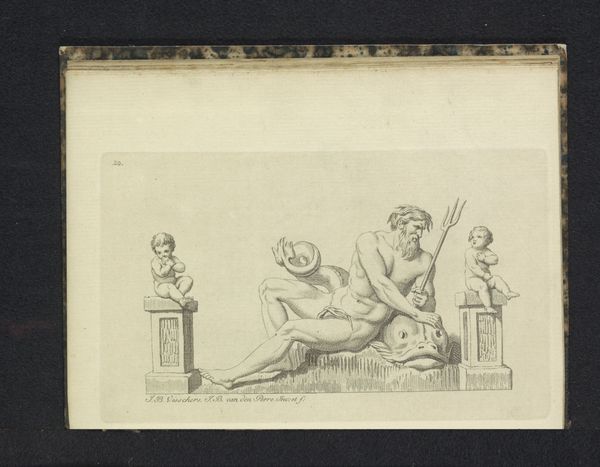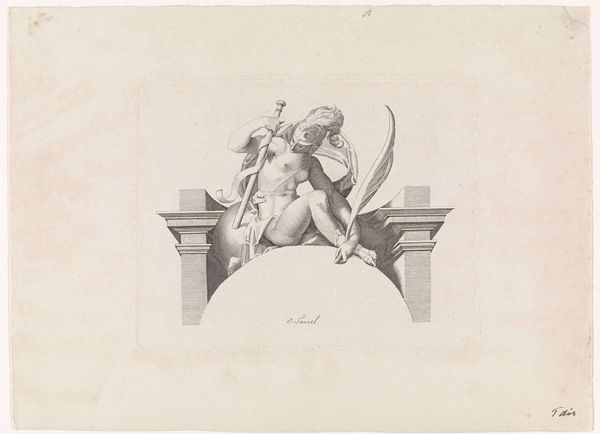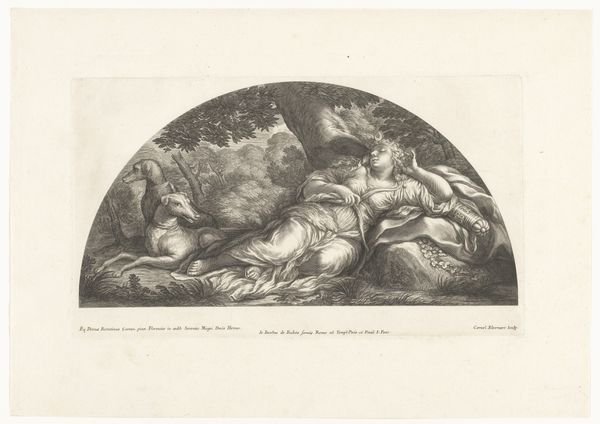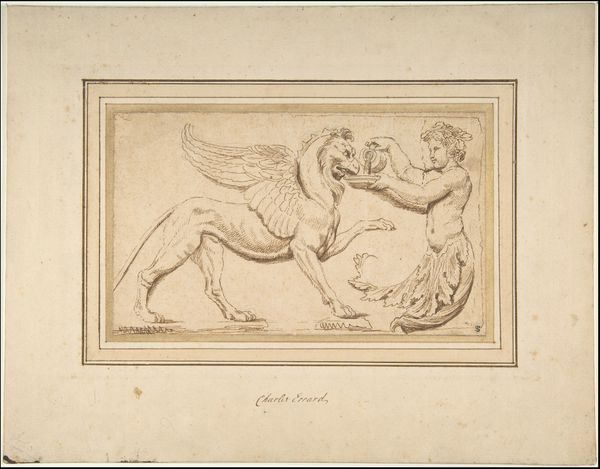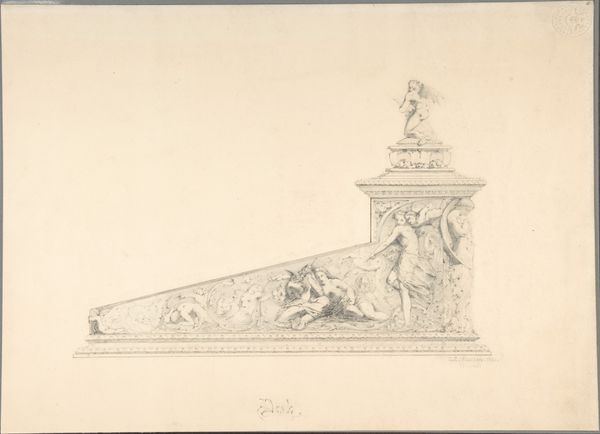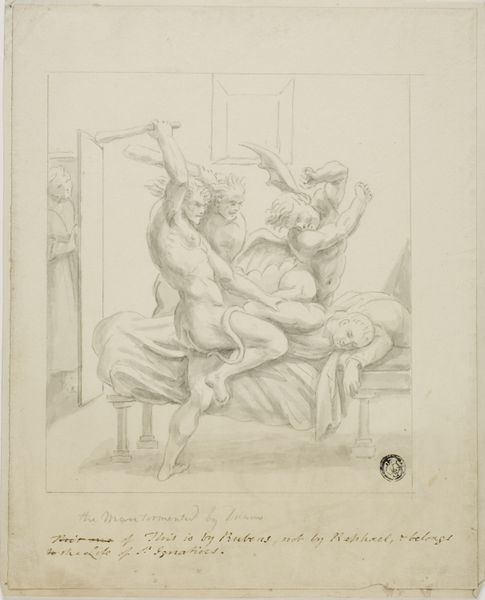
drawing, pencil, engraving
#
drawing
#
light pencil work
#
quirky sketch
#
allegory
#
neoclassicism
#
pencil sketch
#
figuration
#
personal sketchbook
#
idea generation sketch
#
ink drawing experimentation
#
pen-ink sketch
#
pencil
#
sketchbook drawing
#
history-painting
#
storyboard and sketchbook work
#
sketchbook art
#
engraving
Dimensions: height 215 mm, width 297 mm
Copyright: Rijks Museum: Open Domain
Editor: This is "Vadertje Tijd met kinderen," or "Father Time with Children," a pencil drawing by Christian Bernhard Rode, created in 1768. There’s something about the image, its monochrome palette, that feels quite melancholic, yet hopeful in its depiction of care, all at the same time. How do you interpret this work? Curator: It’s a fascinating piece, particularly when viewed through the lens of 18th-century social dynamics. Father Time, burdened and surrounded by children, speaks volumes about societal expectations of masculinity and paternal roles. It invites us to question who carries the burdens of labor and care within a patriarchal society, and whose stories get overlooked. Editor: So, you see it as a commentary on societal burdens? Curator: Precisely. Rode made this in 1768, a period of emerging Enlightenment ideals alongside rigid social hierarchies. Notice how the children cling to him, representing the relentless demands placed on the paternal figure. Is this a celebration, a lament, or a critical observation? Also, how does the neo-classical style influence this depiction of domestic life, given the movement’s association with power and order? Editor: That's an interesting point, contrasting the personal with the prevailing style of power. It seems less about celebration and more about the inherent contradictions within the era’s social fabric. I never would have considered these layers otherwise. Curator: Exactly! Recognizing those nuances lets us engage more deeply with art’s ongoing conversation with history, politics, gender and power. It makes the artwork relevant, sparking discussion. Editor: I can see how thinking about art this way gives the piece greater significance, adding new depth to something that, on the surface, seems like just another classical sketch. Thanks! Curator: It's a continuous process of revealing these connections, transforming our understanding. Thank you, too, for the great questions!
Comments
No comments
Be the first to comment and join the conversation on the ultimate creative platform.
